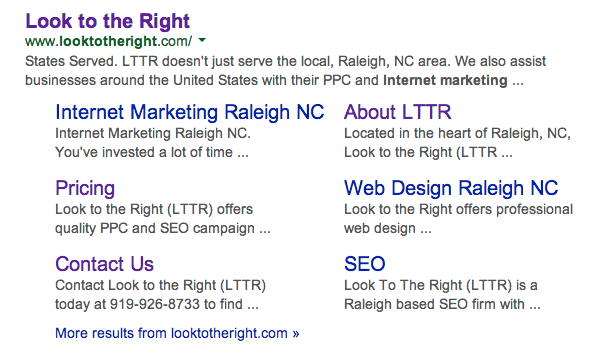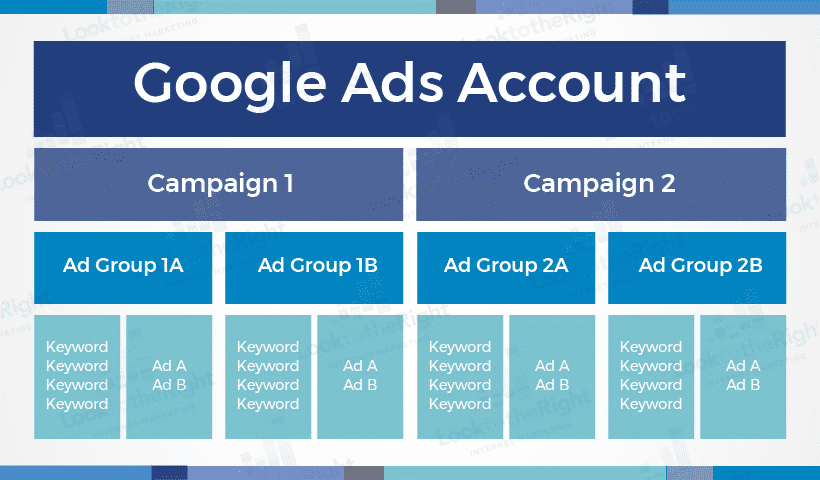As we welcome the arrival of 2015, the following are some online marketing tips to keep in mind.
 #1 – Post more viral content.
#1 – Post more viral content.
Nothing catches someone’s eye like great, viral content. If you don’t have a YouTube channel, create one. Think through some interesting or unusual topics that pertain to your industry (or your client’s industry), and start wireframing. Since it’s visual, it pays to hire a professional videographer. He/she will be able to guide you in capturing the look and feel for the video.
#2 – Become an expert in your industry.
This is sometimes easier said than done. Becoming an expert means investing in time – time to hire the right staff people, time that will be spent reading and performing market research, and time actually doing marketing to figure out what works and what doesn’t. In the end, however, it’s worth it.
#3 – Segment your audience to target your content accordingly.
By segmenting your audience, you will be able to more effectively write and deliver online marketing content that appeals to specific people.
#4 – Keep an eye on global trends.
Believe it or not, global events affect your business as well as your clients’ businesses. Knowing what is going on, and what is happening in the world can help you be proactive in your marketing approach.
#5 – Write original content.
It’s been said time and again – content is king. In 2015, the same will still hold true. There is easy out. To write quality, original content, you should hire online content writers who have a track record for producing quality work.
#6 – Have a personal approach when dealing with clients.
Having a personalized approach with clients can be something as simple as checking in every few days to see how they feel about the work that you’re doing. Tailor your communication with clients on a case-by-case basis. For example, some clients may prefer email-only communication once a week versus other clients who may be more auditory and prefer a quick phone call.
#7 – Encourage original story-sharing.
One of the quickest ways to audience engagement on the Internet is giving people a platform on which to share their own experiences. Find ways to encourage online social sharing. For instance, you might write a blog post in which you feature someone who purchased or used your business’ services. In turn, that person may then take to social media to share their story, etc.
#8 – Engage in mobile marketing.
More brands are beginning to think more seriously about mobile marketing, and with good reason. The mobile industry has exploded in recent years, and it shows no signs of slowing down any time soon. From iPhones to iPads, Kindles, and other types of tablets and smartphone devices – more people are on their mobile devices now than ever before. To engage in effective mobile marketing, you have to think about how your brand would be presented if traditional websites ceased to exist. This is especially true of eCommerce businesses.
#9 – Get more involved with online marketing in “real-time”.
Online marketing often generates fast feedback from consumers, and the feedback isn’t always positive. By being involved in online marketing in real-time (think Twitter & Google Alerts, etc.), you will be able to more quickly and effectively respond to customer complaints and compliments.
#10 – Respond to negativity in creative, more positive ways.
If you run a business, you will inevitably have to deal with some form of criticism. How you respond to this criticism is more important than the actual criticism itself. As mentioned previously, engaging in online marketing in “real-time” is crucial. Brainstorm positive, creative ways that reflect your company’s ideals. This may mean having to have at least one person whose sole responsibility is to monitor your online brand reputation.
#11 – Develop a visual marketing strategy.
What is your visual marketing strategy? Before most people have even read the words on your website, they are attracted to the visual design, look, layout, feel and/or functionality of your website. Despite being the most important aspect of a website, many companies still overlook web design as a key component of online marketing.
#12 – Research and engage with potential “influencers” in your industry.
Knowing who the influencers are in your industry is one thing; having a working relationship with them is another thing entirely. In the business world, some relationships take years to foster and just minutes to destroy. This is important to keep in mind when choosing who to build relationships with. Having a meaningful relationship with a key influencer in your industry, however, is priceless.
#13 – Minimize email distractions.
Often overlooked, your email has a lot to do with how productive or unproductive you are. It is easy to get lost in a sea of email on a Monday morning or throughout the week. Minimize email distractions by setting specific time slots to check your email. All other times, shut your email off or shut off email notifications. Set up automatic email responses and/or email notes in the footer of your email signature to alert others that you only check email during certain times. Most clients and work associates will understand this.
#14 – Create and launch your own marketing meme.
Memes can generate a TON of traffic to your website. Think creatively about which meme would most accurately represent your business or brand, and employ the help of other staff members to create a meme with viral potential. From cute cats to unicorns to something else creative, the possibilities for marketing your very own meme are endless.

#15 – Focus on specific social media.
While most people and businesses can benefit from social media, not all social media is created equal, and not all customers/clients use social media in the same way. Marketers sometimes make the mistake of thinking that they need to join every and all social media channels. However, this is further from the truth. In fact, many marketers wind up spreading themselves too thin because they are managing too many social media platforms. Do the research ahead of time to figure out where your target audience spends the majority of their social media hours, and create accounts only for the top 2 or 3 social media platforms. It will be easier to manage/track.
#16 – Create an email marketing campaign.
E-mail marketing campaigns are a great way to stay relevant with present, past, and future customers. However, you should take care to only create email marketing campaigns that truly offer something of value. Otherwise, you may be seen as a spammer. Plan ahead to determine how often you market newsletters and other information and to whom. You may have to tailor your messages accordingly.
#17 – Attend more networking events.
Networking events are are great way to rub elbows with people within your industry. It is also a great way to pick up on what other people are doing within your industry, and it is also a great opportunity to learn something new (as many networking events feature panel speakers). Want to build credibility? Apply to be a panel presenter at a future networking meeting.
#18 – Launch a Facebook Ad Campaign.
As the top social media outlet on the Internet, there is no reason why you shouldn’t be actively running a Facebook ad campaign. Besides the obvious reasons, Facebook advertising is a simple, low-cost, online marketing strategy that allows you access to potentially target millions of people in an effort to turn them into customers. Launching a Facebook ad campaign is super easy with Facebook’s step-by-step instructions.
#19 – Use LinkedIn to leverage professional connections.
LinkedIn is another under-utilized, online marketing tool. Start by creating a LinkedIn company page. Invite all of your colleagues, friends, and family members to join it. Next, start posting to your LinkedIn profile. Join other groups and actively participate in the online dialogue taking place. Finally, reach out to your connections and plan a lunch meeting or some other face-to-face gathering. Remember that you’re not just building connections; you’re building personal relationships.
#20 – Revamp your company’s website.
You’re working on creating amazing online marketing campaigns for other businesses and clients, so why is your website still stuck in the 90s? If you haven’t updated your website in the past 12 months, it’s time to consider upgrading. For instance, is your website responsive? You wouldn’t hire someone to cut your hair if their hair looked terrible, and you wouldn’t hire a personal trainer who was overweight – so make sure your website it on point!
#21 – Encourage and engage your employees/business in corporate volunteerism.
More companies are engaging in corporate volunteerism, and studies prove that it has numerous benefits:
- Boosts employee morale
- Boosts team building, loyalty, & productivity
- Boosts motivation, and reduces absenteeism
- Reaches more clients and increases sales – thus having a positive impact on profitability
- And more!
#22 – Keep an eye on the competition.
Always keep an eye on the competition to see what they’re doing. This does several things:
- It allows you to compare notes to see what you’re not doing.
- It can give you bigger and better marketing ideas.
- It prevents you from being blindsided by a potential competitor that you didn’t know about.
- It allows you to see what others are saying (positive or negative) about the competition, thus allowing you to adjust your own campaigns as needed.
#23 – Invest in your employees.
The top reason why people hate their job isn’t because of the work; it’s because of the management. Investing in your employees goes beyond a salary and benefits. Set aside time to check in with your team members to see how they are feeling about their role on your team. Provide opportunities to educate them, and encourage them in areas where their skills shine while also being supportive as they tackle new challenges. You may discover areas of improvement or potential problems that can be remedied before they turn into larger issues. You don’t have a shot at success without being surrounded by a team you trust to get the job done.
#24 – Attend training seminars.
The Internet is constantly evolving, and online marketing changes from week to week. Therefore, staying on top of the latest happenings is crucial. Attending training seminars will not only help you to stay relevant ; it’s also important for employees to attend the same training seminars. After all, you are only as good as the weakest member of your team.
#25 – Limit your direct mail.
Direct mail campaigns, while not completely dead, should be limited as they are usually more expensive and do not have the same return on investment compared to online marketing. If you decide to do direct mail campaigns, it should be heavily researched ahead of time to figure out costs, contacts and other marketing materials. Limit the demographic and audience size if possible.
#26 – Set up Google Alerts.
There are numerous ways to use Google Alerts to your advantage. Besides brand monitoring, some quick ways to take advantage of Google Alerts include:
- Set up Google Alerts to track your competitors’ names (use this to see what online traffic strategies they may be employing).
- Set up Google Alerts to track influencers within your industry.
- Set up alerts for specific sets of keywords that you are trying to rank for in Google.
#27 – Use quality images with online, written content.
Images are what draw readers into reading and digesting your awesome content, so choose your images wisely. Pay attention to things such as:
- Image quality (pixels)
- Image source (original image vs. uploaded from another website)
- Formatting (ex: right, left, or center justified)
- Size
- Alt Tags
- Image attribution (always attribute the image to the original photographer – even if it was you!)
#28 – Interview an influencer and feature it on the company blog/website.
Interviews make great fodder for blogs and websites. Interviewing an influencer in your industry is a great way to start or continue a dialogue about a particular topic that may be of interest to your audience. It is also a great way to spark interest among readers who will then share that story among their peers, thus lending more credibility to your business.
#29 – Follow trending topics, and create content around it.
Stay on top of trends. Doing so will help generate topical content that you can then use to relate to your audience while also increasing your chances of being found in search results.
#30 – Take advantage of marketing automation tools.
Using online automation marketing tools does two things:
- It frees up your time
- It allows you to streamline content by keeping you more organized.




 #1 – Post more viral content.
#1 – Post more viral content.



 Estimated Reading Time: 2 minutes, 9 seconds. Contains approximately 430 words.
Estimated Reading Time: 2 minutes, 9 seconds. Contains approximately 430 words.

